Belt Longevity and Maintenance
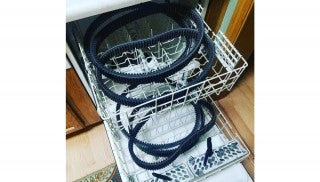
We remember when the cost of a belt wasn’t a big deal and we started every year with a new belt installed, and often a new spare. Now with today’s more expensive materials and manufacturing processes, getting longevity from a belt is important. Here we’ve put together some tips to help judge your belts condition and get longevity from your belt.
Starting with a New Belt
We caught this interesting belt-prep photo on Dustin Schmidt’s Instagram. Clearly he uses his dishwasher for more than dishes.
Dustin races the Semi-Pro Class in the USXC, so a belt could be the difference between a podium and a DNF (Did Not Finish). We discussed how using the dishwasher with a normal dishwasher detergent removes chemicals and specifically, the mold release. He does not run them through the heat/drying cycle by the way.
Having a new belt that is clean and void of manufacturing chemicals is important, so consider washing yours (maybe by hand) in hot water and soap, and scrubbing the running surface before installation. You may want to measure and record the width for later comparison.
Shop For Snowmobile Replacement Belts
Breaking In A New Belt
Traditionally our break-in process is taking it easy on them, heat cycle them 3 times, and often switch them around while performing the process. This should include keeping them under half-throttle throughout this heat cycle process. Much like engines, a proper break-in process will make quite a bit of difference in performance and longevity. Patience is key. Remember that it is a good practice to remove your belt during your season and inspect it.
Used Belts
If we have a belt that we’re going to use again, we remove it from the clutches during the off-season. This keeps the belt at rest and allows it to maintain a free shape, instead of conforming to the clutches. We visually inspect it to ensure the cords aren’t fraying, there is no cracking between the “lugs/ribs/cogs”, we study the face of the belt to ensure uniformity side to side, no cracking or separation of layers, and we measure the belt width to ensure it is correct after some use/wear.
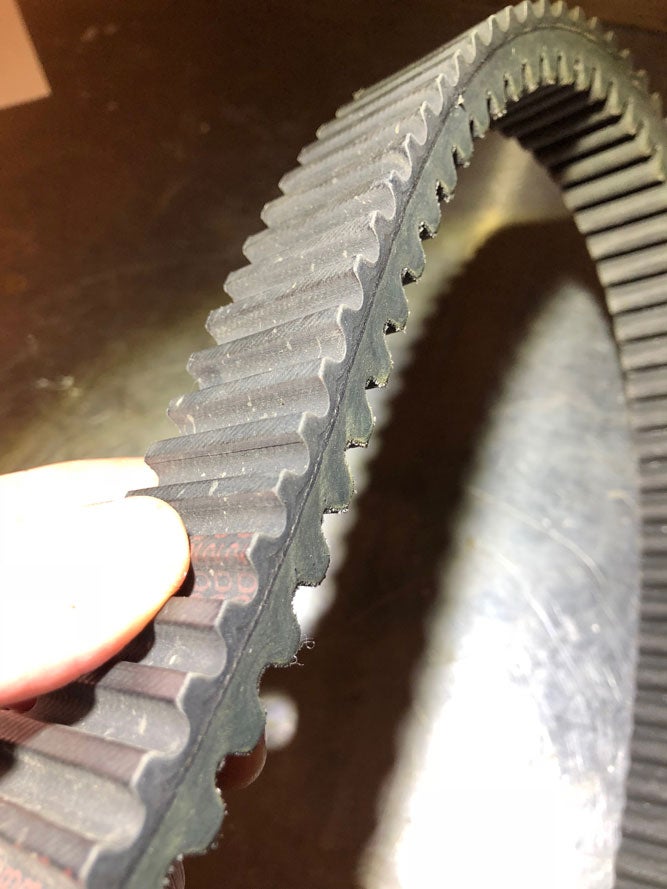
Visually the face of this spare belt looks good. The cord isn’t damaged and the face looks good, but the other side isn’t as good.
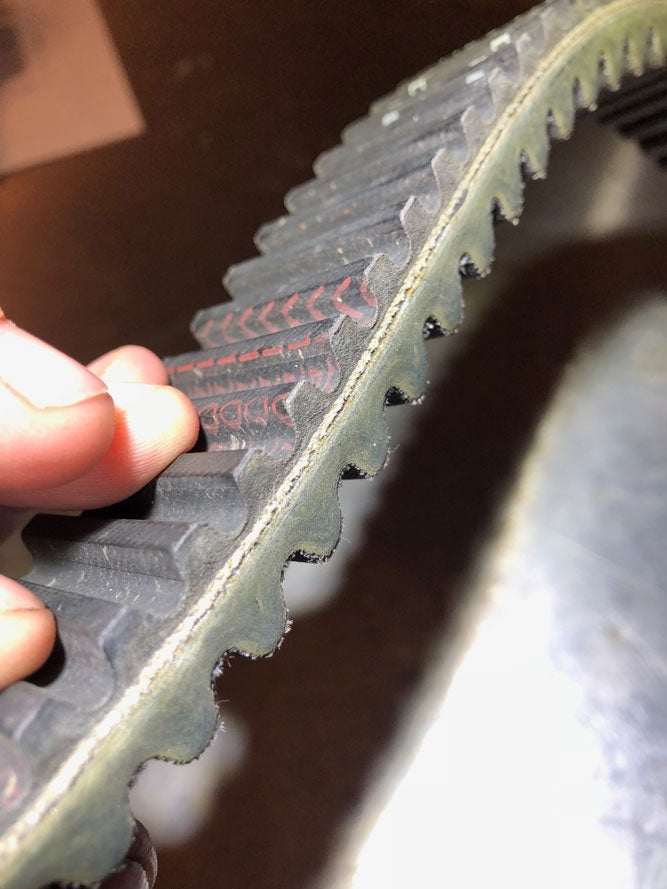
The cord is starting to show wear from the clutch face as you can see by the color and texture difference. We found uneven wear at the top of the belt. Hence this is a spare that will be used gently if used at all.
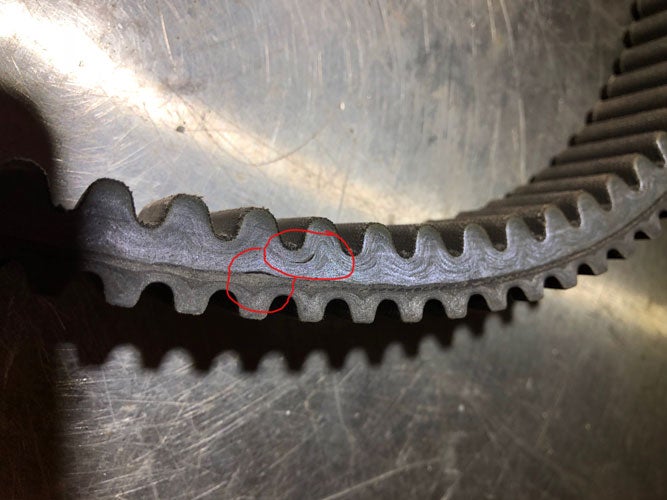
Upon further inspection a small crack has started and the layers are starting to separate. Even as a spare this belt should be used very gently.
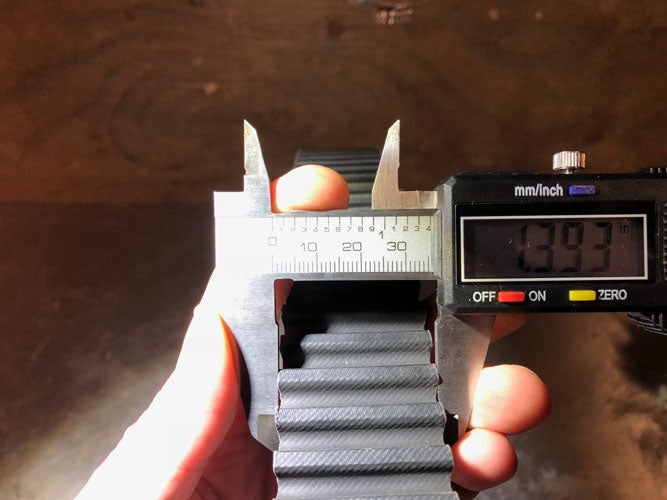
Belts have a width measurement and should be checked. A belt which is too narrow will affect your performance.
If the face of the belt looks “glazed”, it’s likely time for a new one. If you really want to save it or keep it as a spare, try scuffing the face with crocus cloth, and then cleaning it. If the face of the belt is too hard and glazed, it won’t be soft enough to maintain pressure on the clutch faces and will slip, and could damage your clutch faces.
Spare Belts
Is your spare belt going to get you home? That is the question you need to ask yourself. Please consider that the cost of a good spare belt could easily outweigh the cost of walking home in the cold.
Other Tips
Keeping your clutches clean, aligned, and in top operating condition will improve your belt longevity. If your belt leaves rubber markings on your clutch, study them to determine why it is happening and correct it. Your clutch springs provide side-force so ensure they meet specification or are replaced as they age. Replacing clutch springs every year or 2 will improve your performance more than you know.
Your Insight
What other tips do you have to break-in and maintain snowmobile belts?
We are committed to finding, researching, and recommending the best products. We earn commissions from purchases you make using the retail links in our product reviews. Learn more about how this works.



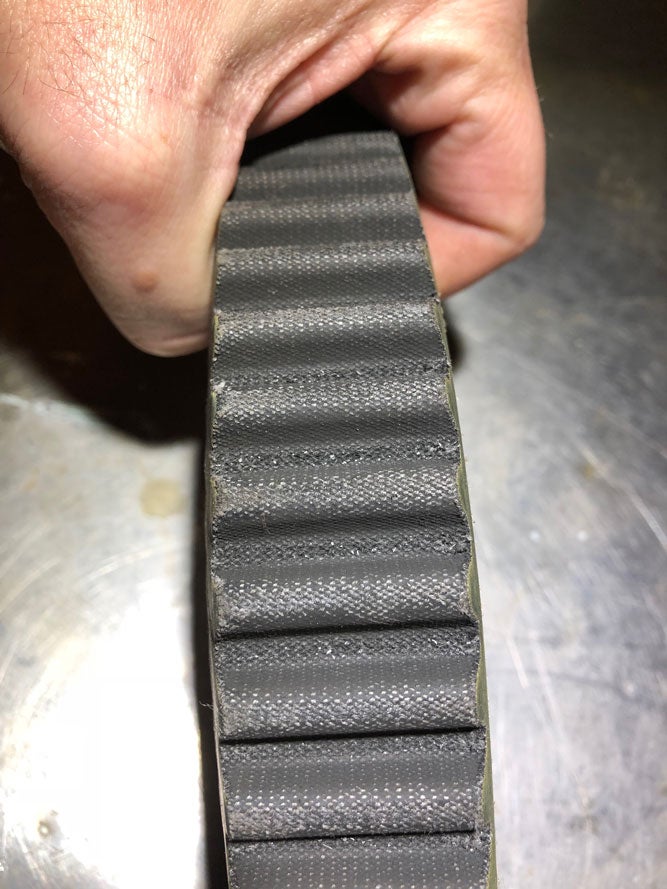


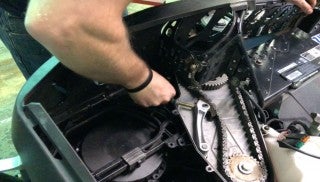


 Your Privacy Choices
Your Privacy Choices